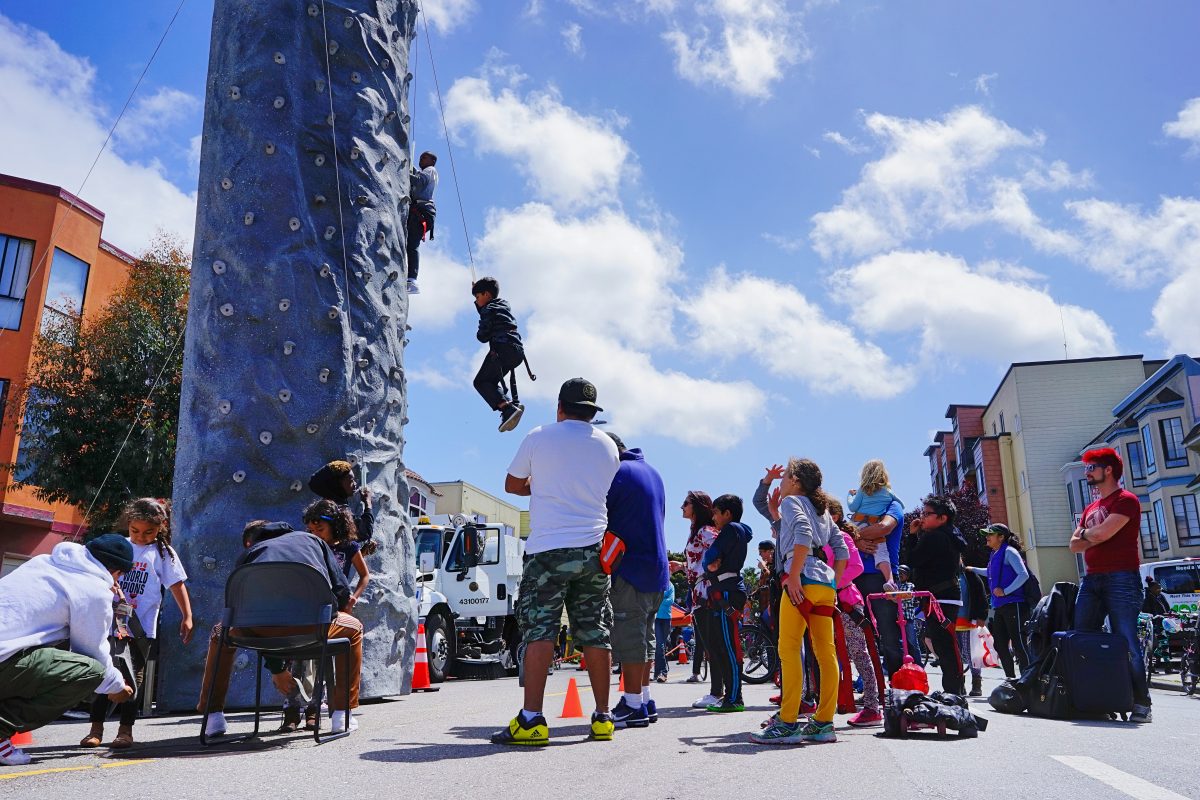Sunday Streets Dogpatch/Mission Bay
Final Date and Route TBA
In 2020, a new Sunday Streets route comes to the Dogpatch and Mission Bay neighborhoods, building on the history of the previous Bayview-Dogpatch with a new event dedicated to the two eastern, waterfront-hugging neighborhoods.
While Sunday Streets joined Dogpatch with its southern neighbor, Bayview, in previous years, the new Sunday Streets will bridge the neighborhood with Mission Bay. Situated between Potrero Hill and the bay, Dogpatch is home to multiple art galleries converted from industrial warehouses, small businesses and many residential homes.
The route connects residents with Dogpatch small businesses, and attendees will enjoy waterfront access, an opportunity that will grow as new developments and waterfront space is established.
Connecting 22nd St, 3rd Street, Mariposa and Terry Francois Blvd, the new route will celebrate the Mission Bay neighborhood, home to a large residential community and multiple affordable housing developments, many of which are still being built.
An area still under construction, Mission Bay has seen an explosion of growth in recent years, and Livable City looks to collaborate with residents, small businesses, local organizations and more to create a day dedicated to the identity of this brand-new neighborhood.
TRANSIT & LIVABILITY
The proposed Central Subway project will make the link between Mission Bay, Oracle Park, Market Street–Union Square, and Chinatown even faster.
22nd Street’s Caltrain station is one of only nine stations in Caltrans’ 29-station system that receive “Baby Bullet” express service in addition to regular service.
Mission Rock will be a new mixed-used neighborhood consisting of eight acres of new public open space, approximately 1,500 new rental homes with 40% affordable to low and middle income families, and small retail shops and cafes, with expected completion in 2025.
DID YOU KNOW?
Dogpatch architecture offers a glimpse into pre-1906 San Francisco, when the neighborhood’s location and surrounding marshland offered protection from the great earthquake and fire. Look out for old factories and homes (built by and for the working-class occupants of this industrial neighborhood) on Tennessee and Minnesota Streets between 22nd and 20th and beyond.
In the 19th century, Mission Bay was used as a dumping ground for building projects, and later for debris from the 1906 earthquake.
In the 1890s, Islais Creek was the largest body of water in San Francisco, and residents used it for recreation, transportation and drinking water. Today, the creek is largely filled in and flows out to the bay via the Islais Creek Channel, located between Dogpatch and Bayview. It still regularly floods the Cayuga Terrace neighborhood during rainstorms.
Advocates, along with the SF Planning Department, SFPUC and SFMTA are looking to in rehabilitate the marshlands that surrounded the creek of water pre-industrialization. Learn more at SF Planning’s Islais Creek Adapation Strategy.

